 It feels impossible to start any message during this strange and scary time without first acknowledging our shared circumstances: a pandemic; an inept, untrustworthy, racist demagogue in the White House; and the disruption to almost every tiny square of our personal and professional lives.
It feels impossible to start any message during this strange and scary time without first acknowledging our shared circumstances: a pandemic; an inept, untrustworthy, racist demagogue in the White House; and the disruption to almost every tiny square of our personal and professional lives.
We hope you are finding ways to connect with your friends and family, find solidarity in your networks, and access the beauty of the natural world, even as you keep yourself and others safe with the unfortunately named “social distancing.”
As we all consider what the next months hold, and in spite of so many unknowns, we remain committed to building up and supporting our community of people’s history teachers across the country. [Read more in Education in the Time of the Coronavirus via Rethinking Schools.]
Lesson for Students: Who’s to Blame? A People’s Tribunal on the Coronavirus Pandemic
By Caneisha Mills, High School Teacher, Washington, D.C.
In mid-March 2020, D.C. public schools closed their buildings, like other school districts across the country, as the world watched the COVID-19 pandemic unfold
I wrote this lesson, Who’s to Blame? A People’s Tribunal on the Coronavirus Pandemic, to help my students grapple with the forces that would change their lives.
This people’s tribunal begins with the premise that a heinous crime is being committed as tens of millions of people’s lives are in danger due to the outbreak of the novel coronavirus — COVID-19. But who — and/or what — is responsible for this crime? Who should be held accountable for the spread of the virus and its devastating effects?
Continue reading and download lesson
Teaching ZEP Lessons Remotely: Recommitting to the Why — If Not the How — of Our Pedagogy
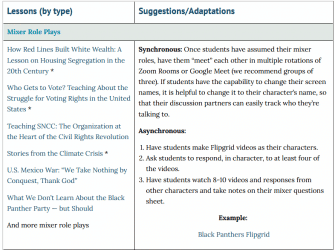 In this guide by Ursula Wolfe-Rocca, the Zinn Education Project offers modest suggestions and guidance on how to use the lessons on this website in remote teaching.
In this guide by Ursula Wolfe-Rocca, the Zinn Education Project offers modest suggestions and guidance on how to use the lessons on this website in remote teaching.
Our guidance is modest in two ways. First, the remote approaches we suggest do not require a great deal of technological know-how and are widely available; we only suggest tools that take little time for educators to learn, are relatively intuitive for students, and are free or commonly adopted by public schools. Second, we are not experts in remote-education and we know many of you will likely surpass — creatively and ingeniously — these suggestions in your own classrooms. These recommendations are more like invitations — invitations to hold fast to your belief in the power of people’s history as you innovate, experiment, fail, learn, and discover how to teach during a pandemic.
For some select lessons (including the People’s Tribunal on the Coronavirus) that are listed in the article and marked with an asterisk*, the Zinn Education Project has prepared handouts for remote access via Google Docs. Access the template for the handouts on the last page of the PDF of the respective lesson. Learn more.
Films for Students
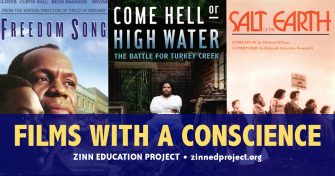 |
|
We offer these two guides to teaching with film during the COVID-19 crisis — with our schools closed, our students at home, and our curricula thrown into disarray. It has always been a good idea to use “films with a conscience” with our students, but films may now be an even more valuable and accessible “text” we can use to help young people think deeply and critically about the world.
Along with our films list, here are some strategies we use for viewing films with students in the classroom that invite insight and critical reflection. We encourage you to adapt these for online use with students or with your own families.
Podcasts for Students
Podcasts offer accessible and engaging people’s history lessons. Here we list some of our favorites that may be of interest to high school students.
Let us know if you share these with your students and/or have others to recommend.
Pandemics, Now and Then
Here are articles and one short video for teaching about the history of pandemics and the connection between climate change and the coronavirus.
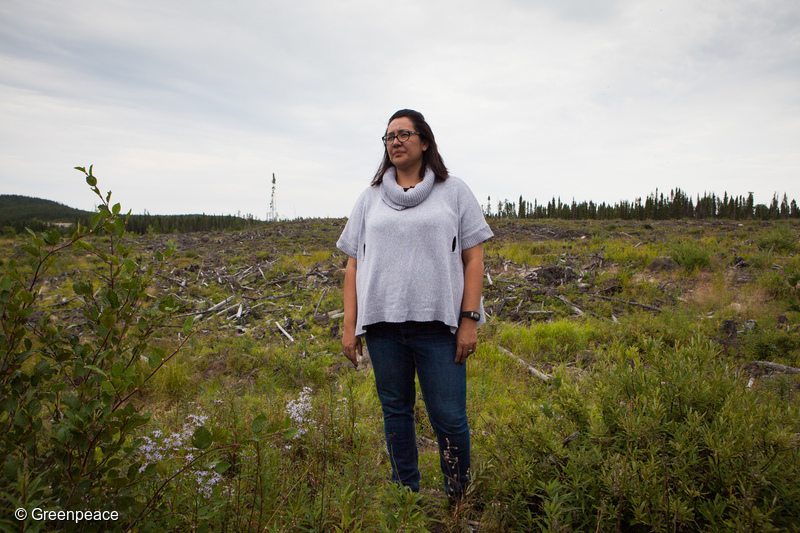 |
The Corona Connection: Forest Loss Drives Viruses as Well as Climate Change Here are two articles for classroom use on the connection between deforestation, climate change, and the coronavirus. |
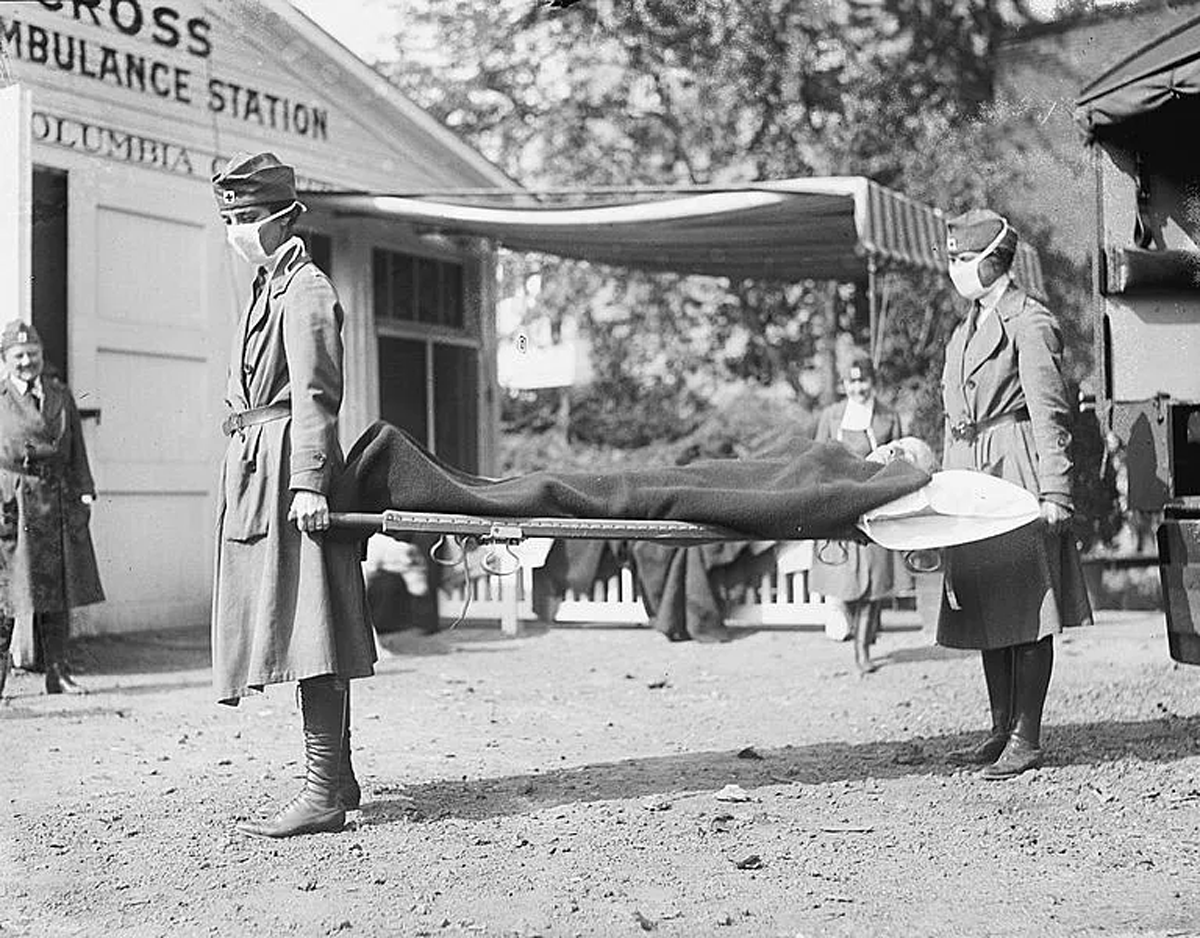 |
1918 Flu: How Information Policing and Nationalist Propaganda Worsened a Pandemic a Century Ago By Ayush Tiwari Reporting on the “Spanish” flu in late 1918 was shaped by orders from President Woodrow Wilson. During World War I, the public were to be served good, righteous, and morale-boosting information, but not the truthful one. Newspaper reports on the flu were dominated by half-truths, lies, and distortions. Continue reading at Newslaundry. |
 |
In a short video, author and activist Naomi Klein argues that it is vital for people to fight for the kind of transformative change that can not only curb the worst effects of the current crisis but also set society on a more just path. [Watch on Democracy Now!] |
 |
How Climate Change Is Contributing to Skyrocketing Rates of Infectious Disease By Abrahm Lustgarten Ignoring the connection between climate change and pandemics would be “dangerous delusion.” Continue reading at ProPublica. |
Newsela
At Newsela, educators can now access — for free — select articles adapted from the Zinn Education Project website at the original high school level plus four reading levels, ranging from 3rd to 9th grade.
IndyKids
IndyKids is a multi-platform current events and social justice news source produced by kids, for kids. It is geared toward young people in grades 4 to 8 and high school English Language Learners. Subscribe to the print edition and/or read the articles online. Find more of our favorite age-appropriate materials and opportunities for younger students.
Digital Collections
Here are digital collections that offer online opportunities to explore people’s history. The collections include photos, letters, newspapers, meeting notes, and other primary documents. The topics of the collections include the Student Nonviolent Coordinating Committee (SNCC) of the 1960s, the Colored Conventions of the 19th century, “last seen” ads to seek family members during Reconstruction, and the World War II-era Abraham Lincoln Brigades.
People’s Historians Online
 To provide additional support to middle and high school teachers when school buildings closed in March 2020, the Zinn Education Project launched an online series of interactive classes featuring people’s historians.
To provide additional support to middle and high school teachers when school buildings closed in March 2020, the Zinn Education Project launched an online series of interactive classes featuring people’s historians.
Watch recordings of the Spring 2020 series here, and find the list of for our upcoming classes.
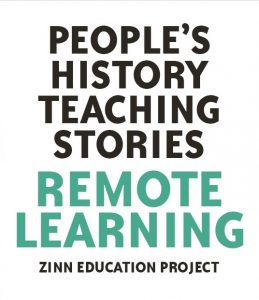 People’s History Teaching Stories: Remote Learning
People’s History Teaching Stories: Remote Learning
We offer stories from educators who are teaching people’s history remotely during the pandemic. For example, New Jersey teacher John Terry shared his experience with the U.S. Mexico War mixer lesson:
Using Google Classroom, I posted a variety of roles in a .pdf for students to access and asked them to complete the worksheet provided in which they had to “meet” a variety of figures. . . I won’t let the challenges with which we are presented stop me from allowing my students access to meaningful lessons in social studies that integrate principles of human rights and social justice.
Continue reading John’s story and other teachers’ stories.
Share Your Teaching Story and Receive the New York Times 1619 Project Booklet
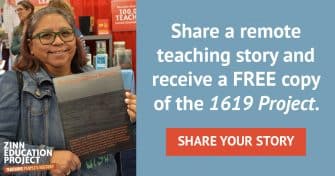 We welcome stories about how you are teaching Zinn Education Project lessons via online platforms (such as Zoom or Google Classroom) while school buildings are closed. Your experience with teaching people’s history lessons online can help other teachers faced with the challenges of remote learning. How are you using those platforms to engage students in people’s history lessons?
We welcome stories about how you are teaching Zinn Education Project lessons via online platforms (such as Zoom or Google Classroom) while school buildings are closed. Your experience with teaching people’s history lessons online can help other teachers faced with the challenges of remote learning. How are you using those platforms to engage students in people’s history lessons?
We are also interested in stories about lessons on the coronavirus with a focus on equity and climate science.
In appreciation for your time, we can send you a free copy of the New York Times 1619 Project. Read entries to date in People’s History Teaching Stories: Remote Learning about teaching during the pandemic. Learn more and share your story.
We Need Your Help
We need your support. With no corporate sponsors, 100 percent of Zinn Education Project funding comes from individuals like you.

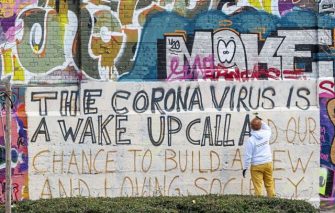
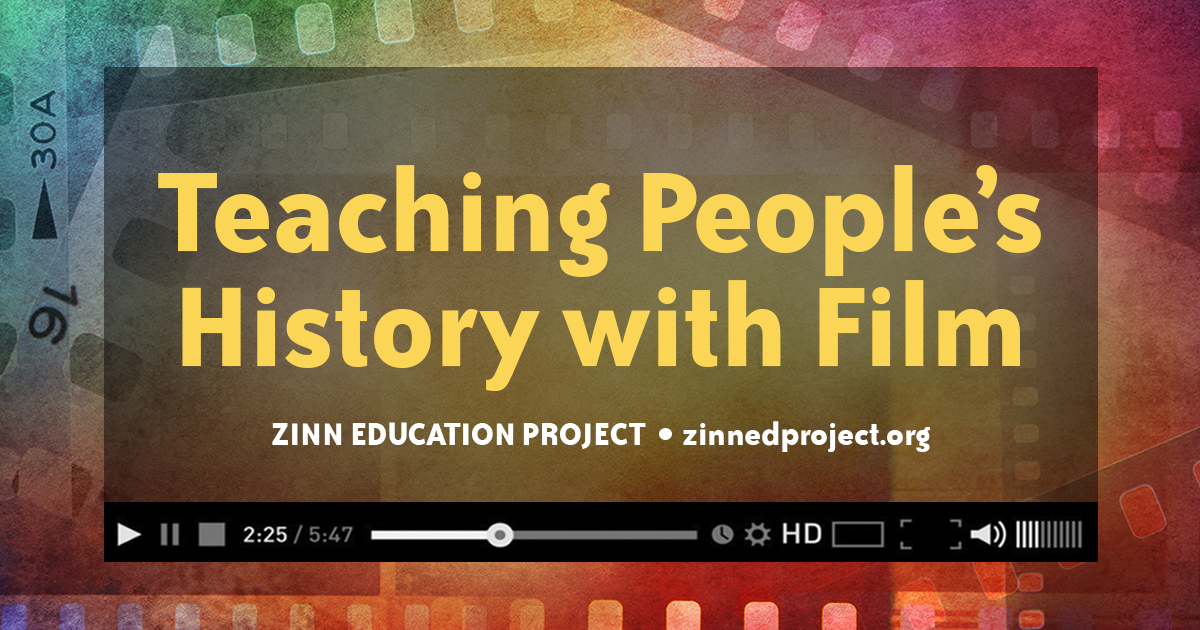
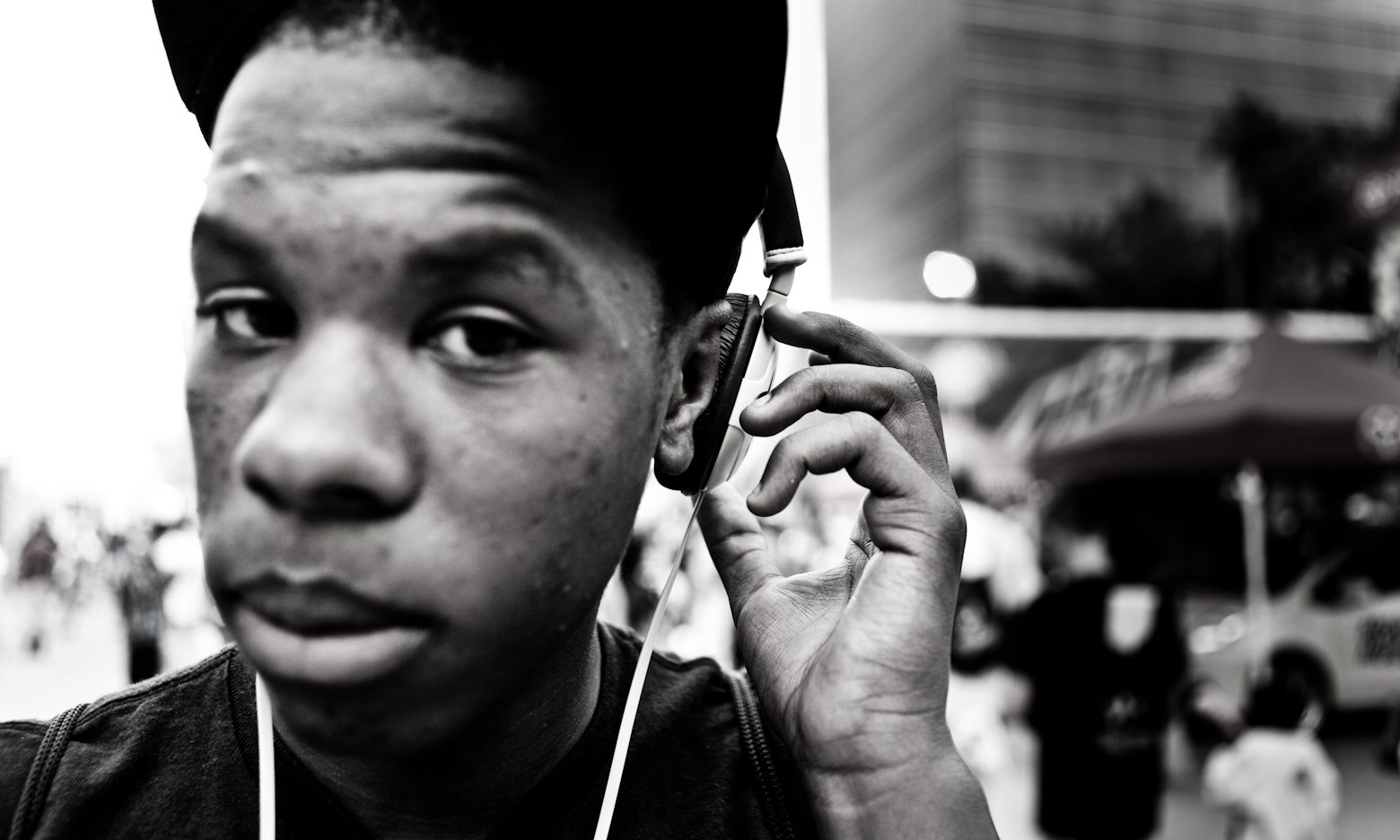

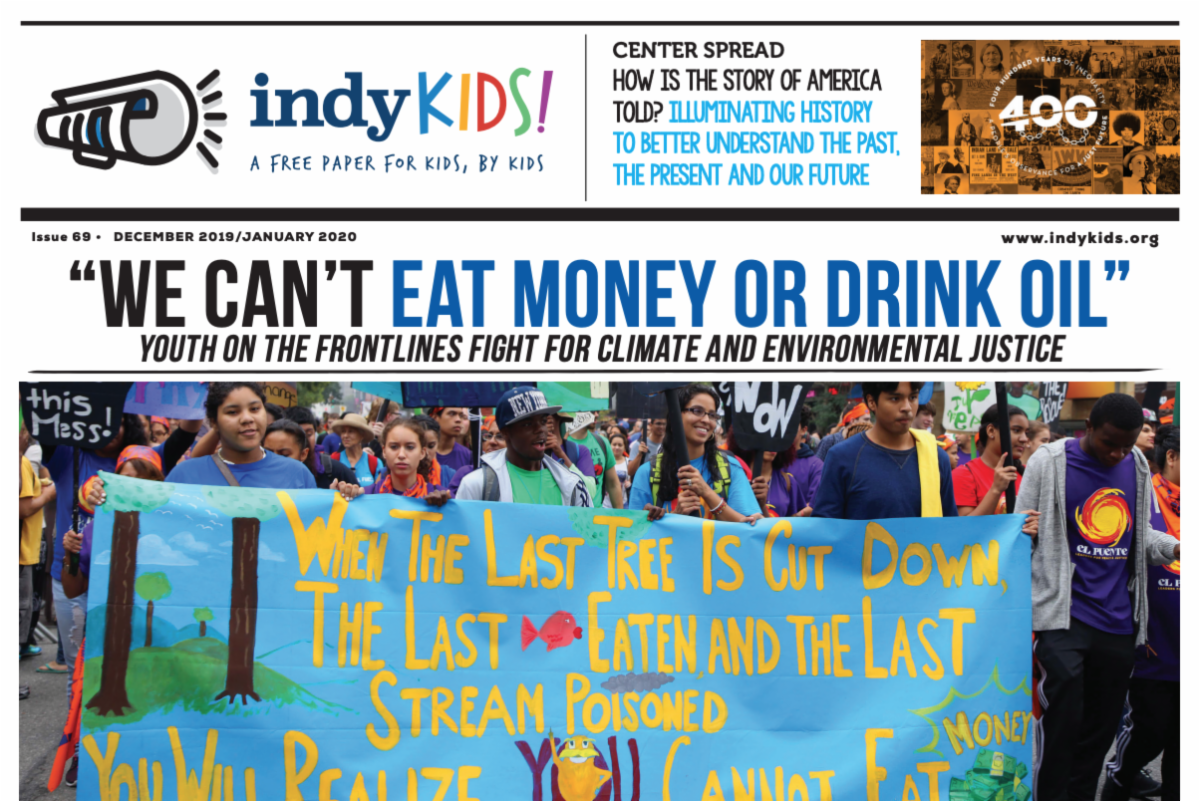







Dear colleagues of the Zinn Education Project,
I would first like to thank you for your work, your research and the material you propose on various key historical questions that have repercussions today on a national and international level. I teach English as a second language in a French high school and your work allowed me to make my students draw links between past and present. They tried to understand how the history of a nation has consequences on today’s society, and also how hiding historical truth can serve political purposes in the building of a nation. Most of the US themes studied with my students this year were based on the documents and ideas I could find in your website.
Here are a few examples of themes I studied with them:
– From slavery to police violence, from objects to criminals: the place of Black people in US society.
– 100 years ago, an untold event: the Tulsa massacre.
– Black Lives Matter: defending human rights and building solidarity.
– Thanksgiving: what lies behind the national myth?
– Rethinking the 4th of July: the construction of national heroes.
My students were particularly shocked by the Tulsa massacre and the true history of Thanksgiving. The Zinn Education Project resources were key to initiate them to critical thinking.
Finally, you have my full support and solidarity in your fight against reactionary attacks regarding the teaching of historical truth.